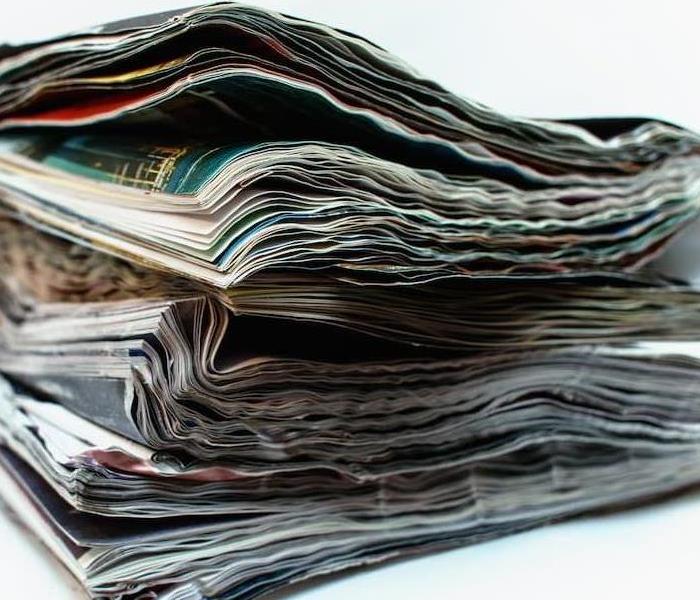Save Your Documents after Water Damage
12/27/2022 (Permalink)
It is possible to save and restore water-damaged documents by using various techniques. When faced with a disaster like water damage, it's absolutely necessary to recover any physical documents you own first.
Documents that have been damaged by water need specific drying procedures. Some of the techniques that can be applied are air-drying, freeze-drying, desiccant dehumidifying, and even hand-dry cleaning. These techniques are able to restore photos, business records, and other vital documents not easily replaced. So don't be discouraged if you find your documents wet and soggy. Here are a few tips and techniques to help you save documents after water damage.
How to Dry Loose Sheets
If your papers are wet, you must gently remove them from the water as soon as possible. Be extremely careful while removing them since the papers can easily tear. If the papers have become dirty, clean them using wet tissue paper. Place the individual papers on a plain paper towel - the paper towel must be thick and plain. The wet papers might absorb the print from the paper towel if it isn't plain and could stick to them. Place the documents near an air source such as a fan.
You can also place them under direct sunlight to speed up the process but make sure there isn't any wind. You could also use blotting paper to dry damp spots. Another option is to place them in a freeze dryer to fast-track the drying. Keep changing the drying paper beneath to prevent the papers from sticking together, and hang them up after substantial drying to treat the backside. You can also keep the documents or books in the freezer after placing them in plastic zip locks; this preserves the pages and prevents mold growth.
How to Dry Books
Drying books is a little harder than drying individual sheets of paper, especially if the book is hardbound. Place paper towels between the wet pages and lay the book flat or upside down to facilitate airflow. You can't put paper towels between every page, so place them continuously wherever the pages are most wet. For the other pages, place paper towels between every 20 pages or so. Use a fan to speed up the drying process.
Do not use hot air since it can lead to tearing. Do not keep your book outside since it might curl due to the wind. You can place paper weights on the edges to prevent curling or folding edges. Replace the wet paper towels regularly. If the book smells unpleasant after drying, place it in a closed container with baking soda or odor absorbents. But ensure the powder doesn't touch the book or papers directly.
How to Dry Photos
When drying wet photos, gently remove the photos from the wet area. Clean them using wet tissue paper dipped in cold water. Be careful not to smudge the photos. Place them on a plain paper towel and away from direct sunlight. You can use a fan or desiccant dehumidifier to speed up the process. Once the pictures have dried a little, hang them up to dry the backside. If you're unable to dry them yourself or want to preserve them for longer, consider professional drying that will help with complete restoration.
Drying water-damaged papers, books, documents, and photos is a fairly simple process. Handling the papers with care and taking immediate action will make it easier to restore them. If you ever find yourself in a situation needing to recover water-damaged papers, keep the tips we've given in mind.
When you notice something out of the ordinary, call SERVPRO of South and Northwest Grand Rapids at 616-662-9700. Our professional team will help you with your document recovery.




 24/7 Emergency Service
24/7 Emergency Service
